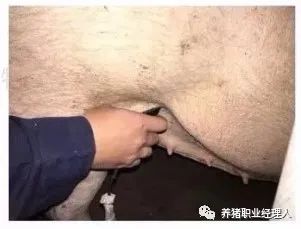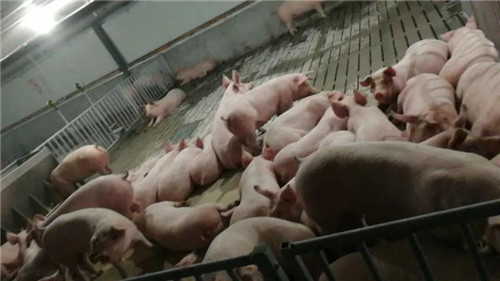How to correctly use B-ultrasound for pregnancy examination
The time of each test takes about 30 seconds. Pregnant sows can be used 24 days after mating, and the test results within 21 days after mating may be unreliable, so two pregnancy tests are needed on the spot to confirm.
The best scanner can detect empty pregnancy with an accuracy of 99%. Almost all empty sows can be detected, all scanners can show normal embryo sacs, and only good scanners can clearly display images of the uterus without embryos on the screen. to confirm that the sow is not pregnant.
Pregnant sows are rarely misdiagnosed as empty at the scene. However, some empty sows may be misdiagnosed as pregnant. The common source of misdiagnosis is to mistake the black spot for the embryo sac to judge that the sow has become pregnant, or to regard multiple small black spots formed by fluid in the uterus as early pregnancy or suspected pregnancy.
Second, the influence of B-ultrasonic scanning on the number of non-production days.
The scanning results of two pig herds showed that the empty pigs detected after the first scan could result in an average of 34 and 42 days of non-production days.
Most sows that are detected to be pregnant but then return to estrus can be found shortly after the scan.
A sow that was detected to be pregnant but then returned to love in a short period of time showed that the sow was actually an empty pig at the time of testing.
Then ask a question, how should we conduct a pregnancy test on the spot?
Third, how to scan the sow?
Remember, we always start with sows that do not return to estrus or show no signs of estrus 24 days of pregnancy and 21 days after mating.
1. Make sure that the pigs are always accessible after entering the pigsty and tested in a quiet way so as not to cause stress or disturb them.
2. At the same time, keep the sow standing.
3. The scanner probe is coated with gel and placed in the groin.
4. Make sure the arms, hands, knees and toes do not squeeze the instrument.
5. Move the probe slowly until a clear image of the fetus is found.

6. If you feel the image is blurred, you need to apply more gel.
7. Pregnancy can be confirmed only if at least two clear embryo sacs are found.
If you can't find the embryo sac, scan the other side.
9. If the diagnosis is uncertain, the sow will be re-scanned one week after marking.
10. Mark the empty sows and move them to the breeding shed.
In some pig farms, if the mating delivery rate is less than 85%, it is recommended to check again in the 6th week of pregnancy. Early detection of infertile sows is the key to shorten the number of days of non-production so as to maximize reproductive efficiency.
The most effective way to manage the days of non-production is to find out the sows that return to estrus during the first normal estrus interval of 18-25 days after mating. Through routine estrus examination, the breeding team should correctly identify more than 60% of the non-pregnant reserve pigs within 18-25 days after mating, and should also be able to use real-time ultrasound examination to confirm more than 90% of the empty sows.
Note that sows can return to infertility at any time within 25-30 days after mating, but most sows will return to estrus within 18-25 days.
Fourth, pregnancy testing should be carried out differently in different periods of time:
After mating until the sow goes to the birth bed. Keep checking with boars at least once a day, which will help breeders find estrus sows and unbred sows.
18-48 days after mating. Pregnant sows do not show signs of estrus in front of adult boars. This will detect regular and irregular empathy.
Before and after 28 days of pregnancy. Real-time ultrasound imaging is very effective in checking pregnancy status (99% accuracy). Sows with uncertain questions can be checked again 35 days after mating (see figure 2.8-2.13).
8 weeks of pregnancy. At this time, the human naked eye can observe the pregnancy from the changes in the sow's abdomen, and this can be used as the last pregnancy test (see figure 2.14-2.15).
Ultrasonic images of non-pregnancy
On the 17th day of pregnancy, it is difficult to identify the gestational sac (uterine vesicle).
On the 28th day of pregnancy, the gestational sac is easy to identify. Pay attention to the embryo image.
On the 35th day of pregnancy, pay attention to the obvious embryo image of the pregnancy sac.
80 days after pregnancy. The fetal skeleton becomes more obvious, but it is difficult to see the image of an embryonic pig in the maternal background. Note: the sow's intestines look like uterine vesicles, but there is no analytical boundary. Due to the significant reduction of allantoic fluid, it is difficult to see fetal pigs in the background of sow abdomen.
About 35 days after mating. Note that although there seems to be a "black hole"-like pregnancy sac, there are no embryos. Sometimes "grain"-like fillings can be seen in the uterine cavity.
The difficulty of identification is shown in figure 2.13-2.15.
Before and after 8 weeks of pregnancy: the difference between non-pregnant sows and pregnant sows could be seen by naked eye observation. The ventral side is drooping and bulging.
Related
- On the eggshell is a badge full of pride. British Poultry Egg Market and Consumer observation
- British study: 72% of Britons are willing to buy native eggs raised by insects
- Guidelines for friendly egg production revised the increase of space in chicken sheds can not be forced to change feathers and lay eggs.
- Risk of delay in customs clearance Australia suspends lobster exports to China
- Pig semen-the Vector of virus Transmission (4)
- Pig semen-the Vector of virus Transmission (3)
- Five common causes of difficult control of classical swine fever in clinic and their countermeasures
- Foot-and-mouth disease is the most effective way to prevent it!
- PED is the number one killer of piglets and has to be guarded against in autumn and winter.
- What is "yellow fat pig"? Have you ever heard the pig collector talk about "yellow fat pig"?



